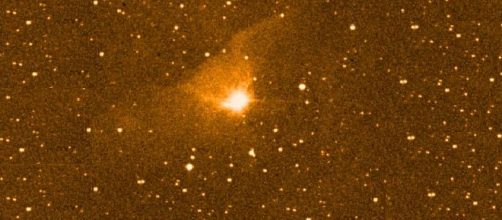In an attempt to learn more about the origins of the sun, a group of scientists compared recent data obtained with the Stratospheric Observatory for Infrared Astronomy (SOFIA) and data gathered in 2004 with Spitzer Space Telescope. Doing so, scientists were able to see how this star has been consuming matter in the stars ‘interior at higher rates than on its margins.
FU Orionis
This star is a variable star at a distance of 1,500 light years from earth in the direction of the constellation Orion. In the third decade of the past century, it increased in apparent magnitude, from 16.5 to 9.6, and its magnitude has remained close to 9.
This star is a pre-main sequence star, showing a great variation in spectral type and magnitude.
In 1936 Fu Orionis began swallowing mass from its surrounding disk of gas and dust, becoming one hundred times brighter and raising the temperature of its surrounding disk more than 12, 0000 F° (7,000 K), during the first three months after ignition. In the present, this star continues consuming gas; however, at a slower rate.
Seeing in the infrared
Scientists analysed image data obtained with SOFIA and compared it with Spitzer´s observations -- both of these telescopes observe the universe in infrared, therefore they´re capable of detecting heat. Analyzing the data, it was concluded that the star has continued swallowing mass to this date, which could account of 18 times the mass of Jupiter.
It was discovered that the amount of energy in the visible and infrared spectrums has diminished by 13% since the observations made by Spitzer in 2004, with the hottest material being depleted more than the colder one. This leads scientists to think that the star has been depleting the innermost region of the disk, while the outer region has remained intact.
How can this star help explain the formation of planets?
It´s believed that if the sun, in its protostar stage, had gone through a similar brightening event such as FU Orionis did, its innermost disk would have changed in chemical composition, whereas, the outer disk would have remained intact, and this could have influenced the formation of the planets around the disk.
Conclusions
FU Orionis may provide new insights into the formation of the early solar system, as the sun may have experienced a similar exploding event, which would have affected the formation of protoplanets. This could explain the differences in composition between earth and Mars.

